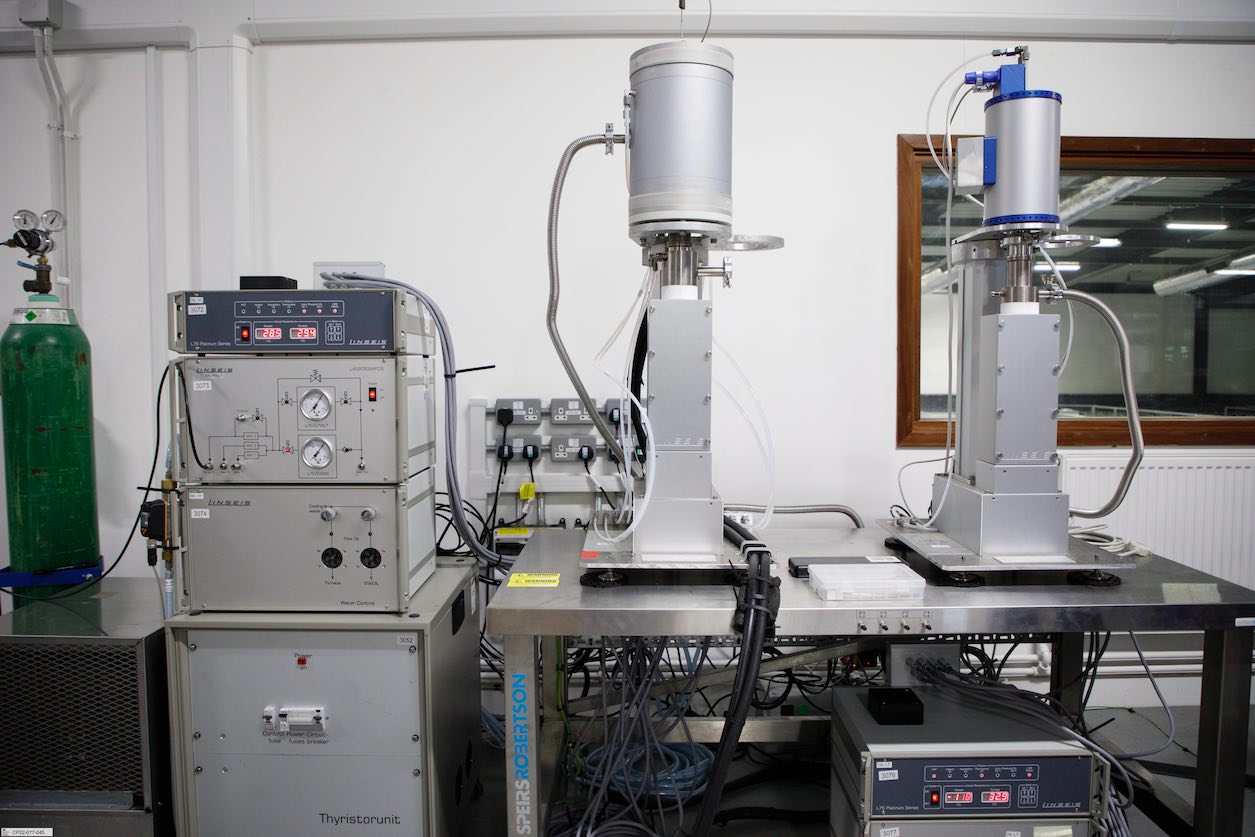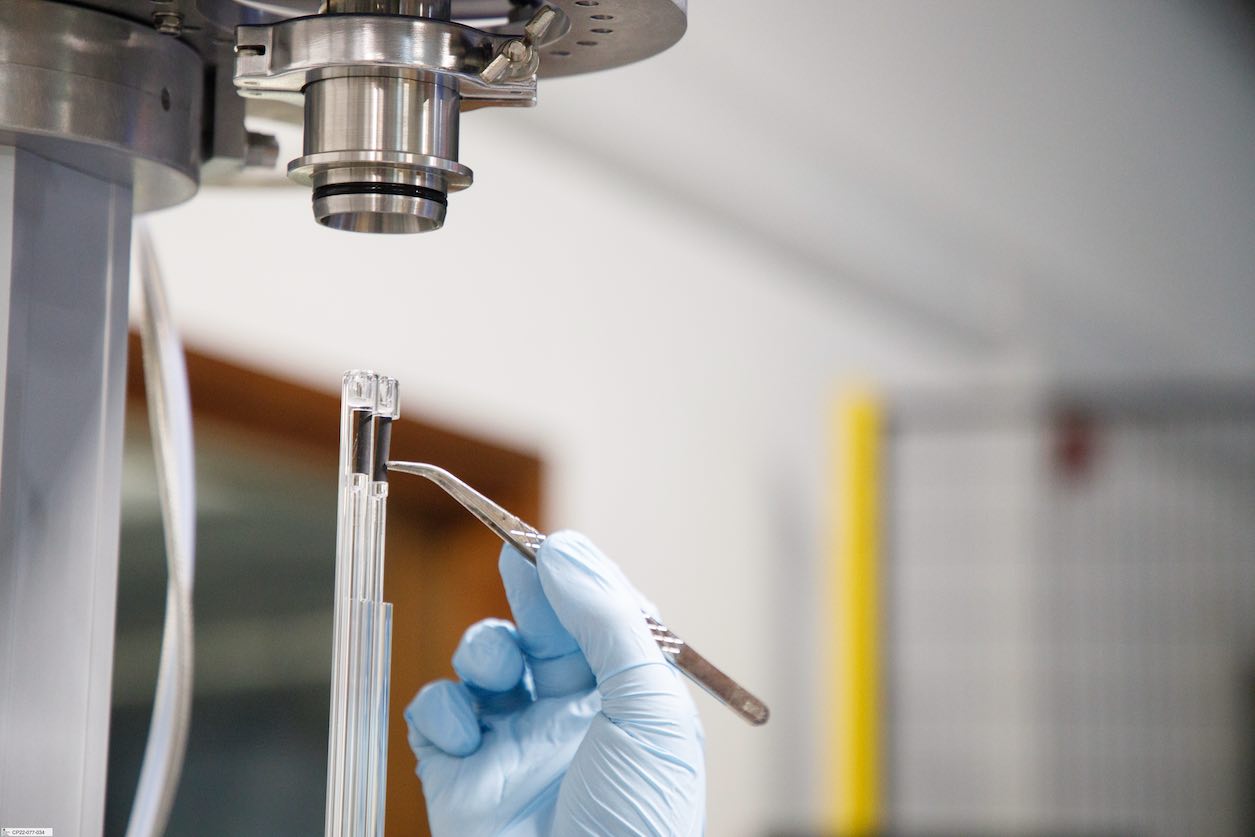Instrument Overview:
A controlled atmosphere furnace heats or cools a sample to a target temperature whilst a push-rod transfers the vertical expansion of the sample into a high resolution strain gauge. From this the relative increase in length and the coefficient of thermal expansion (CTE) can be calculated.
Applications:
- Change in length of solid materials as a function of temperature
Technical Specification:
- High temperature furnace: RT to 2000°C
- Low temperature furnace: -150°C to 500°C
- Vertical push-rods for minimal friction on expansion and guaranteed push-rod contact
- Measurement range: ±2.5mm, resolution: 0.03nm
- Variable force contact rods
- Dual push-rod setup for either higher throughput or direct reference measurement
- Choice of atmosphere: Inert / Oxidising / Reducing / Vacuum
- CTE accuracy: ±0.5%
- Max data acquisition rate: 2MHz
- Temperature accuracy: ±0.5°C or 0.25%
- Standard: ASTM E831 / ASTM D696

Image of the Dilatometer.

Image of the Dilatometer being loaded for a background heating cycle with a carbon reference sample.